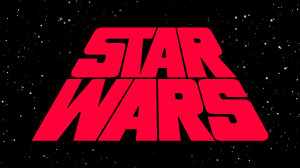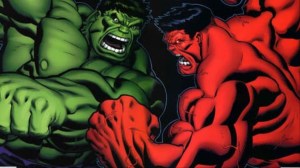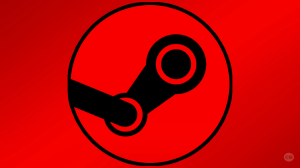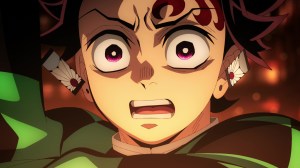American comics are synonymous with the superhero genre.
Videos by ComicBook.com
Walk into almost any comic book store and you’re likely to see shelves covered in offerings from Marvel and DC Comics, often referred to as The Big Two.
That may be why it’s surprising to hear one of the absolute best superhero comics of today is being published in Japan. Along with popular imports like One Piece and Naruto, Shonen Jump is also printing a comic called One-Punch Man, and if you’re a fan of superheroes, you absolutely need to read it.
One-Punch Man, created by One and drawn by Yusuke Murata, tells the story of Saitama who lives in a world filled with superheroes and plenty of monsters in need of fighting.
One day, Saitama decided he too would like to be a superhero and stuck to a strict routine of 100 sit-ups, 100 push-ups, 100 squats, and 10km of running every day. After three years he had lost all of his hair, but become so powerful that he could defeat any opponent with a single punch.
It’s a premise that sounds silly, and often is, but also provides a set up to explore the best aspects of this beloved genre.
If you still need convincing, we’ve assembled a list of the five best reasons to check out One-Punch Man as soon as possible.
The Humor

One-Punch Man sounds ridiculous and that’s because it absolutely is.
It’s a story filled with teenage cyborgs, world-threatening monsters, and plenty of other very strange stuff. That really just makes it a superhero comic though.
Rather than trying to take itself too seriously, the series embraces the weirdness of the genre and has a lot of fun doing it.
Saitama’s deadpan reactions to his insane battles provide an excellent dose of levity in almost every chapter. While the villains of the series become only more infuriated at his calmness, Saitama is left only with disappointment as no one can stand up to his punches.
He’s a truly unique character in this world, wandering through it as if in a daze. His lack of concern is shown in the art as well with a simple egg-shaped head that places him outside of the norm of this hyper-stylized universe. Every encounter is an opportunity for humor and Saitama’s blase reactions deliver plenty of laughs.
The Designs

Saitama might look rather plain, but that only serves to highlight just how incredibly detailed everything else around him is.
His simple jumpsuit and cape serve as a basic model for superhero costumes, while the mechanical workings of his student Genos are much more complex.
When he’s hit by acid in one fight, Murata lays bare the many layers of machinery at work with stunning precision.
There are lots of heroes in the series, each with their own unique style, but its the villains that are often most impressive. Each new monster is impressive in their design and often their size as well.
They fill entire spreads with tentacles, muscles, and pincers that loom over the series’ heroes. Each baddie is a daunting work of art and there are more than a dozen of them in just the first few volumes. The specificity of each bad guys accompanied by the lush detail of cities they destroy is truly an impressive feat of comics artwork.
The Action

All of these excellently designed villains and heroes don’t just look good, they’re involved in some of the most incredible superhero action being drawn today.
Murata understands the importance of scale in superhero comics and regularly goes big. Cities crumble and villains grow with power.
Punches land on a spectacular scale that moves muscle and shatters bones. The regular use of spreads allows Murata to really play with a sense of movement and momentum in all of his action sequences.
What he creates is truly incredible as a single punch can stretch across two pages, telling a complete story in the arc of its motion. Murata’s fine lines pull readers eyes exactly where they need to go, encouraging them to revel in the detailed violence.
The execution of action in One-Punch Man is the perfect balance to the comic’s sense of humor. No matter how silly things may seem, when a fight starts, it’s clear that the stakes are real and that people can (and do) get hurt.
The Deconstruction of Superheroes

One-Punch Man is very aware of its genre.
Saitama’s origin and god-like level of power can be easily read as a commentary on the stories of superheroes themselves. Much of the story is focused on ranking and categorization. Heroes are carefully broken into a variety of classes (ranked C-, B-, A-, and finally S-) each with their own listings.
It resembles the need for fans to categorize power levels and determine who could beat who. These factors aren’t as important to the story as how the rankings affect the characters themselves though.
Other components, like the listing of cities by letter rather than any specific name, can also be seen as a commentary on the genre. Various heroes are clearly homages to specific types, although each character is truly an original creation.
All of this adds layers of depth for experienced superhero readers who will easily recognize story types and what One is saying about the very popular genre of cape comics.
The Love of Superheroes

One and Murata’s commentary on the superhero genre in One-Punch Man isn’t founded in criticism though, if anything it’s a love letter.
The way they embrace the humor and action found in superhero stories are what allow them to exaggerate these things to such great effect. When jokes are made, they are always funny. When punches land, they always hurt. One-Punch Man is a comic focused on what makes its source material great.
A big part of that comes in its sincere dedication to the heroic themes of superhero comics. While Saitama may often appear bored, those around him aspire to his power in order to help others.
This is best revealed in the character Mumen Rider, a Class-C hero whose only power involves his skill on a bike. Even when incredibly outclassed Mumen Rider still does everything in his power to protect others, putting his life on the line to buy civilians a few more seconds. His showdown with Sea King in the comics fifth volume is a truly moving bit of superheroics. When you read that story, you’ll know why One-Punch Man is one of the best superhero comics of today. It’s funny, beautiful, action-packed, and smart, but most importantly of all: it’s simply a darn good superhero book.
So what do you think? Have you had a chance to read One-Punch Man yet? Share your thoughts in the comments below.









